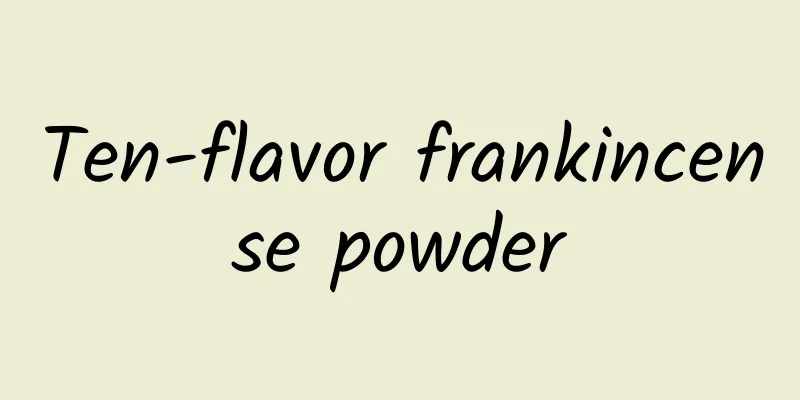Chinese herbal medicine for cough and phlegm

|
When people have symptoms of coughing, they can choose Western medicine treatment, of course, they can also choose traditional Chinese medicine treatment. Because most people will not pay attention to the slightest cough symptom in their bodies. Only when the cough reaches a certain severity and phlegm is produced in the throat will they look for some ways to stop the cough and remove phlegm. Therefore, the Chinese herbal formula for relieving cough and removing phlegm introduced to you today is very necessary. 1. Arisaema Ingredients: Contains saponins, benzoic acid, mucus and a large amount of starch. Nature and flavor: bitter, pungent, warm, toxic. It enters the lung, liver and spleen meridians. Function: Drying dampness and resolving phlegm, dispelling wind and stopping convulsions. Pharmacological experiments have shown that the saponins contained in it can stimulate the gastric mucosa, cause mild nausea, and reflexively cause increased bronchial secretion, producing an expectorant effect. Experiments show that this product has obvious sedative, antispasmodic and analgesic effects. 2. Polygala Ingredients: Contains saponin, polygala acid, resin, fatty oil, etc. Nature and flavor: pungent, bitter, slightly warm. It enters the lung and heart meridians. Function: Soothes the mind, removes phlegm, opens the orifices, and eliminates carbuncle and swelling. The saponins contained in it can stimulate the gastric mucosa and reflexively cause expectoration. According to foreign reports, the saponins it contains can stimulate the gastric mucosa and cause expectoration. The polygala alcohol and polygala acid it contains both have expectorant effects and can also increase the secretion of bronchial mucosa. Its expectorant effect is similar to that of Platycodon grandiflorum, but the intensity of the effect is slightly inferior. It is often used in combination with other drugs as an expectorant to treat chronic bronchitis and cough with phlegm caused by various reasons. Adverse reactions: Large oral doses may cause nausea and vomiting. Use with caution in patients with gastritis, gastric ulcers and pregnant women. 3. Aster Ingredients: Contains aster saponin, asterone, quercetin, etc. Nature and flavor: bitter, sweet, slightly warm. It enters the lung meridian. Function: expectorant and cough relieving. Traditional experience holds that this product can relieve cough and reduce phlegm; and experiments have confirmed that this product can significantly increase the secretion of respiratory glands, dilute phlegm, and make it easier to cough up. Its antitussive effect is not obvious. Experiments show that this product has antibacterial effects on Staphylococcus aureus, Escherichia coli, Proteus, Salmonella typhi, Pseudomonas aeruginosa, etc. It is mainly used to treat cough with excessive phlegm and uncomfortable coughing and vomiting. 4. White mustard Ingredients: Contains sinigrin, fatty oil, myrosinase, mustard alkaloids, etc. Nature and flavor: pungent, warm. It enters the lung meridian. Function: Warming the lungs and eliminating phlegm, promoting qi and dispersing stagnation, unblocking meridians and relieving pain. As a nausea expectorant, white mustard oil has a mild irritation to the gastric mucosa, causing a mild feeling of nausea, which reflexively increases bronchial secretions and eliminates phlegm. It is suitable for cough with clear and thin sputum, fullness and pain in the chest and flanks. Adverse reactions: Overdose can cause gastroenteritis, diarrhea, abdominal pain and other symptoms. 5. Peucedanum chinense Ingredients: Peucedanum praeruptorum contains pyranocoumarins: Peucedanum praeruptorum lactones A, B, C and D. Peucedanum peucedanum contains furanocoumarins: peucedanum glycoside and peucedanum serrata. Nature and flavor: bitter, pungent, slightly cold. It enters the lung meridian. Function: Reduces Qi, eliminates phlegm, and dispels wind-heat. It has a significant effect of increasing respiratory secretion but no significant antitussive effect. Clinically, it is often used in combination with other Chinese medicines to treat lung heat cough, thick phlegm and gas reversal, such as acute bronchitis. 6. Coltsfoot Ingredients: Contains coltsfoot diol, arnica diol, saponins and volatile oils. Nature and flavor: Pungent and warm, enters the lung meridian. Function: Nourishes the lungs and relieves qi, relieves cough and resolves phlegm. Experiments show that the expectorant effect of this product is similar to that of Platycodon grandiflorum. It still has a certain antitussive effect, but its effect is not as good as that of Pinellia ternata and its duration is short. Its alcohol paste can relieve bronchospasm caused by histamine in guinea pigs. This product is a commonly used expectorant and cough suppressant, and is often used in combination with Aster tataricus. The two have a synergistic effect when used together. |
<<: The difference between Shouwu Teng and He Shouwu
>>: What happens after eating Moringa seeds?
Recommend
What are the effects of buffalo horns?
Buffalo horn is actually the horn of the buffalo,...
Can Cordyceps sinensis cure impotence?
Impotence is a disease that men are prone to. Thi...
The efficacy and function of fir fruit
Do you know about fir fruit? It is a common medic...
The efficacy and function of raccoon tail grass
The medicinal value of raccoon tail grass is beyo...
The efficacy and function of bee medicine
Recently, major TV channels have launched various...
Effects of taking Gastrodia elata and Panax notoginseng powder together
Gastrodia elata powder and Panax notoginseng powd...
The efficacy and function of kapok
Friends who don’t know kapok will not understand ...
The efficacy and function of Tibetan peach leaf coral root
Tibetan peach leaf coral root can not only supple...
The efficacy and function of goose kidney
Goose kidney is one of the common traditional Chi...
What are the Chinese medicine prescriptions for replenishing qi and blood?
Many girls suffer from chills, weak waist and kne...
The efficacy and function of the lianxiang tree
Traditional Chinese medicine is very helpful in t...
Effects of boiling water with Xanthium sibiricum
Xanthium sibiricum is one of the most common trad...
What are the functions and effects of Angelica dahurica
Angelica dahurica is a traditional Chinese medici...
A "rough" answer that attempts to refresh the underlying foundations of physics and cognitive science
This is a popular science book that is more brain...









